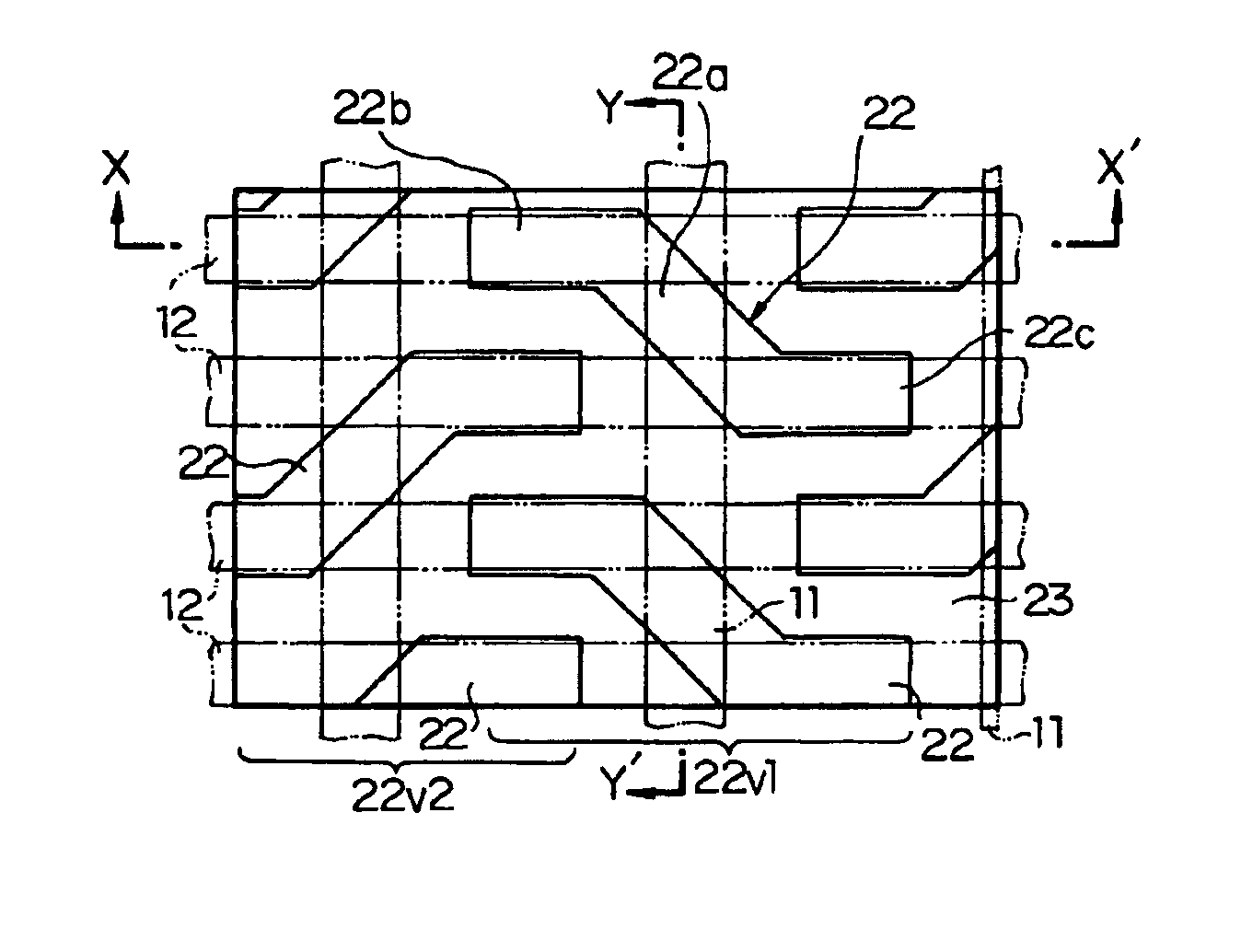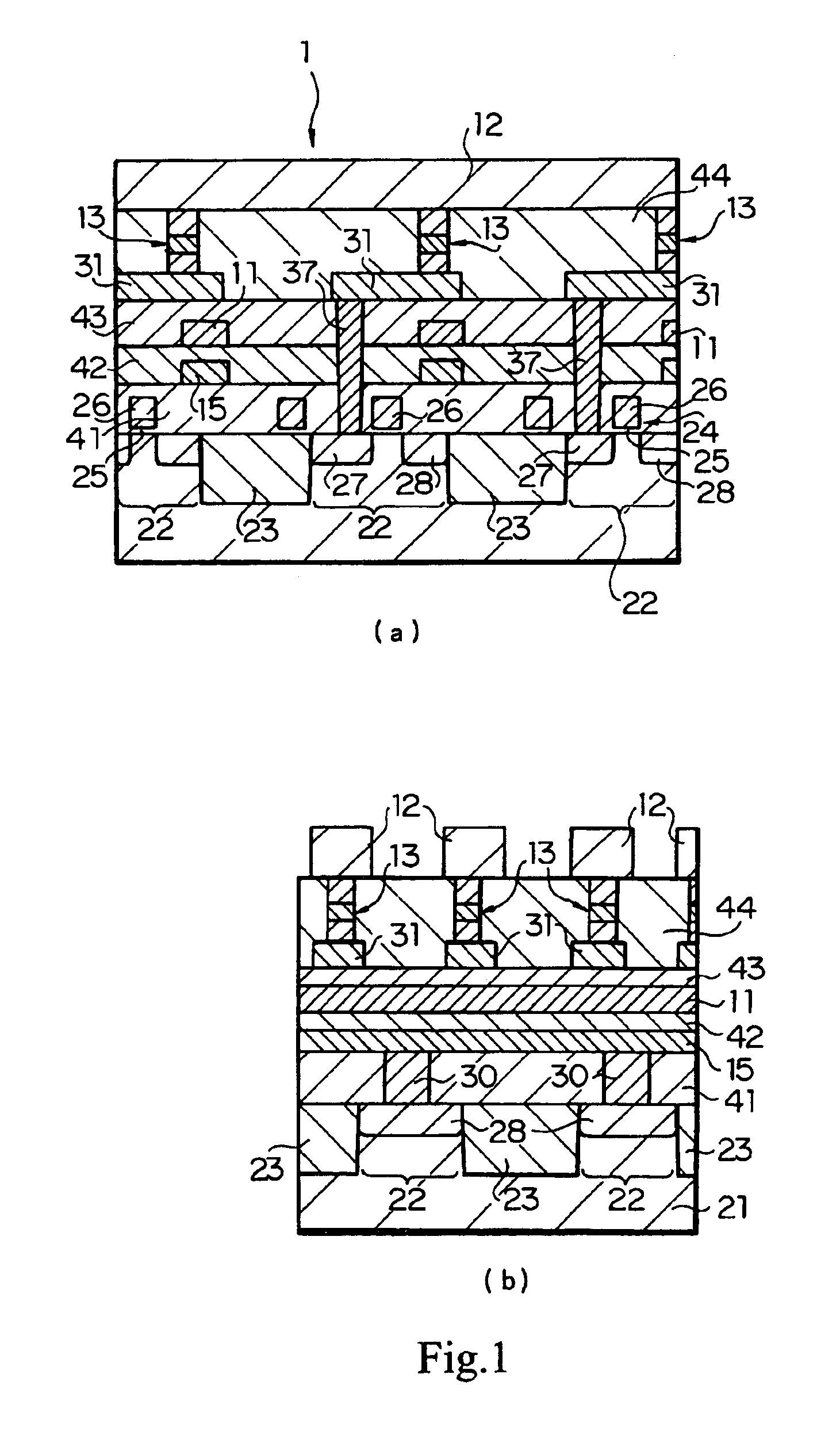Magnetic storage apparatus and manufacturing method thereof
a magnetic storage device and manufacturing method technology, applied in solid-state devices, nanoinformatics, instruments, etc., can solve the problems of difficult microprocessing of ferroelectric capacitors, slow write speed, and difficult integration to a large degree, so as to avoid waste in terms of occupied area and effectively layout semiconductor regions
- Summary
- Abstract
- Description
- Claims
- Application Information
AI Technical Summary
Benefits of technology
Problems solved by technology
Method used
Image
Examples
Embodiment Construction
[0031]First, a general MRAM (Magnetic Random Access Memory) will be explained referring to FIG. 3 which is a schematic structural perspective view showing an essential portion thereof in a simplified manner. In FIG. 3, illustration of the read-out circuit portion is omitted for simplicity.
[0032]It includes nine memory cells, as can be seen in FIG. 3, where write word lines 11 (111, 112, 113) and bit lines 12 (121, 122, 123) are disposed so as to cross with each other. At intersectional regions of the write word lines 11 and the bit lines 12, magnetoresistance effect (TMR) elements 13 (131 to 139) are disposed as magnetic storage elements. Write operation to the TMR elements 13 are accomplished by allowing electric current to flow in the bit lines 12 and the write word lines 11, and changing the direction of magnetization of the storage layer 304 (see FIG. 6 for detail) of the TMR elements 13, formed at the intersections between the bit lines 12 and the write word lines 11, into para...
PUM
 Login to View More
Login to View More Abstract
Description
Claims
Application Information
 Login to View More
Login to View More - R&D
- Intellectual Property
- Life Sciences
- Materials
- Tech Scout
- Unparalleled Data Quality
- Higher Quality Content
- 60% Fewer Hallucinations
Browse by: Latest US Patents, China's latest patents, Technical Efficacy Thesaurus, Application Domain, Technology Topic, Popular Technical Reports.
© 2025 PatSnap. All rights reserved.Legal|Privacy policy|Modern Slavery Act Transparency Statement|Sitemap|About US| Contact US: help@patsnap.com



